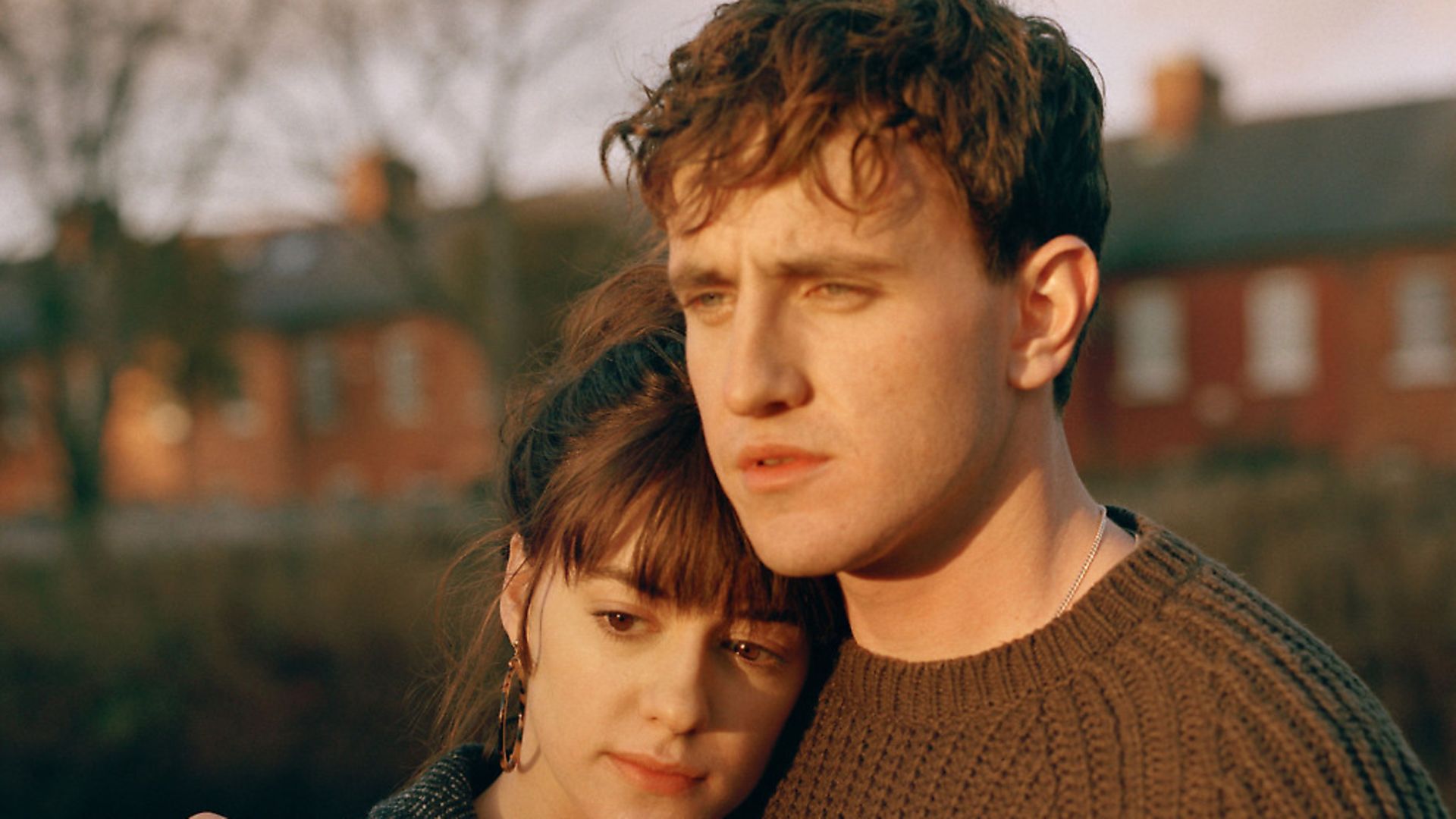
The shows that filled in the visual blanks of the pandemic.
As so often, J.G. Ballard prophesied it all. In 1978, the science fiction writer – who has become, posthumously, a sort of laureate of the pandemic and of its social impact – foresaw that television would evolve into something dizzyingly diverse: “[O]ne will have access to a vast amount of filmed information of every conceivable kind. One will be able to sort of merge one’s own identity with a huge flux of images of various kinds being generated elsewhere.”
In 2020, we have spent thousands of hours in full lockdown or subject to tiered Covid restrictions, bonded to the flickering screen and to an ever-increasing range of streaming services. Public health policy has coincided with the apparently limitless supply of content available on TV, laptop, tablet or phone: “Stay At Home” has also meant “Stay Tuned”.
Only three days before Boris Johnson “instructed” us, on March 23, to observe the new lockdown rules, Tiger King, the high camp documentary series about zookeeper Joe Exotic, went live on Netflix. The battle between the hilariously mulleted, big cat owner in Oklahoma and his Florida-based nemesis Carole Baskin, became the first great water-cooler TV talking point of the Covid era – with the twist that, as millions of people were now working from home, there was no water cooler by which to discuss the best trash TV.
All the same: on Zoom calls, WhatsApp groups and social media, the word got around about this moreish show and the welcome distraction it offered from the brutal reality unfolding in daily press conferences. The nation quickly divided into #TeamJoe, #TeamCarole or (my own preference) #TeamNeither. Tiger King was television as instant analgesic for viewers wondering what to do with a torrent of new and very unsettling emotions.
Thus was set the pattern for the year: as the second national lockdown ended in England on December 2, audiences were still reeling from the (infuriating) final episode of Sky’s The Undoing, a stylish New York whodunnit starring Hugh Grant and Nicole Kidman; and marvelling at the second season of Jon Favreau’s sci-fi-as-western saga The Mandalorian (a Disney+ Star Wars spinoff series).
By the third quarter of 2020, more than 17.5 million households in the UK had access to video-on-demand services, an increase of 2.5 million since the first. Year-on-year, Netflix was reaching 26 per cent more homes than in the third quarter of 2019, while Amazon’s Prime Video increased its audience by a remarkable 49%.
It is a measure of how much we watched this year that, in July, the College of Optometrists warned of what it called “coronavision”. The symptoms of the new affliction “include blurry vision, difficulty focusing, and red or painful eyes, but many sufferers have simply put it down to eyestrain and thought it too trivial to seek help”.
True, some of this could be attributed to more screen time during working hours. But – in reality – most of those who were working from home would still have been spending much of their time staring at laptops had they still been in the office.
Let us be honest: the new variable was more likely to be the decision to, say, spend a weekend bingeing an entire ten-episode season of Ozark, Netflix’s drama about middle class professionals relocating to Missouri to launder money for drug barons; or the whole of Normal People, the BBC’s bafflingly overrated dramatisation of Sally Rooney’s fine novel, which seemed to consist primarily of people in Dublin talking plangently to their own rucksacks.
The great year of staying in was also, fortuitously, a great year for ‘prestige television’, the genre of serious, cerebral TV that was originally nurtured by the advent of DVD box sets and a cluster of masterfully written shows around the turn of the century, such as The Sopranos, The West Wing and The Wire. In 2020, we had Alex Garland’s sci-fi drama DEVS (iPlayer), Mrs. America (ditto), Netflix’s The Queen’s Gambit and Away, and – best of the lot – Michaela Coel’s extraordinary I May Destroy You (iPlayer).
There were amazing documentary series, too: notably, The Last Dance, Jason Hehir’s epic recounting of Michael Jordan’s last season with the Chicago Bulls; The Pharmacist, a superb study of one man’s battle against the US opioid crisis; Challenger: The Final Flight (all Netflix); and Hillary (Sky), Nanette Burnstein’s four-part series on the former secretary of state and defeated presidential candidate.
If we weren’t catching up with the six seasons of Schitt’s Creek (Netflix), we were pretending to be post-modern and ironic about addictive reality TV like Selling Sunset. There was barely time to catch up with Downing Street press conferences between episodes.
All forms of experience seemed, as never before, to converge upon what the writer Charlie Brooker calls the “Black Mirror” – the name he gave his own blockbuster anthology drama show, referring to the blank video screen of the TV, the laptop or the tablet. It became the portal to all forms of news, entertainment, sports (when they were played) and public service announcements.
Without much fanfare, movie releases that would otherwise have been tentpole openings at multiplexes, or arthouse cinema sensations – Sacha Baron Cohen’s Borat sequel (Prime Video), Ron Howard’s Oscar-bait Hillbilly Elegy (Netflix), and Mank (Netflix), David Fincher’s stunning account of the writing of Citizen Kane – were all released on streaming services.
Less than a month after the death of George Floyd on May 25, we were watching Spike Lee’s powerful account of the price paid by African Americans in the Vietnam War, Da 5 Bloods – but on Netflix, rather than at our local Cineworld or Vue cineplex.
Seventeen years after Lost in Translation, Bill Murray and director Sofia Coppola were reunited in On the Rocks: but on Apple TV+ rather than the silver screen. This week, her father, Francis, releases Mario Puzo’s The Godfather Coda: The Death of Michael Corleone, a new edit and restoration of The Godfather Part III to mark its 30th anniversary. You can pre-order it on iTunes for £11.99.
Shouldn’t such a cinematic moment be reserved for the moviehouse and not confined to the sitting room television or the laptop? Maybe. But this is business, not personal.
In so many respects, Covid accelerated trends that were already underway, but few as pointedly as this one: the proliferation of streaming services and the definitive shift from traditional appointment television to on-demand digital consumption. In Nineteen Eighty-Four, George Orwell predicted that we would have telescreens imposed upon us by authoritarian regimes – and there is a measure of truth in this, in the phenomenon of “surveillance capitalism” extensively described by the Harvard professor Shoshana Zuboff, where our devices, including those we watch, record everything about us and feed the market for personal data.
Yet Aldous Huxley came closer to the truth in his novel Brave New World, predicting that we would welcome distraction, entertainment and easy sensation into our lives without resistance or rebellion. The age of streaming is Huxleyan, rather than Orwellian, in character. It’s not as if we put up a fight, is it? Or chased away the deliverers when they brought the 60-inch screens to our doors?
The commercial genius of video on demand is that it enriches the illusion of choice and curation, while steering you by algorithm towards particular content and (of course) towards subscription. Though Netflix is notoriously reluctant to release such statistics, it is clear that, even after four seasons, The Crown continues to drive new viewers to hand over their long card numbers and expiry dates.
The creative downside of this business model is that shows are axed with brutal speed if they fail to encourage sign-ups. The streaming universe generates unprecedented quantities of television. But it is naive to think that more will always, or even usually, mean better.
Prestige television is now a well-established part of the digital TV economy and that is good news. Season 4 of Hulu’s acclaimed The Handmaid’s Tale is on its way (Hulu is owned by Disney, by the way). But remember: ultimately, such content is not commissioned because of artistic or cultural ambition. It is commissioned because it attracts punters. When that stops, it stops – with even less mercy than under the traditional system of weekly viewer ratings. The lofty aesthetic values last only as long as they feed the bottom-line of subscription revenue.
This is our new viewing culture, one that is here to stay: streaming is the future in every sector of televisual content, from news to sports. But the question remains: why did we watch quite so much streamed TV in 2020? Was it just boredom? Yes, of course – but also because, as the novelist David Foster Wallace wrote in his 1993 essay E Unibus Pluram, television “appeals so much to lonely people. To voluntary shut-ins. Every lonely human being I know watches way more than the average US six hours a day”.
Well, this has been the year of the involuntary shut-in; of enforced loneliness. Of collective national identity defined by self-isolation. No wonder we reached instinctively for the remote control. The TV doesn’t ask you to wear a mask or practise social distancing. It says: come inside my bubble, and stay with me.
Let me also offer my own more specific theory. An under-explored but elemental aspect of the pandemic, I think, has been its comparative invisibility. Unlike natural disasters, the aftermath of terror attacks, even previous plagues such as AIDS, this global crisis has taken place almost entirely behind closed doors: necessarily, because the virus is so infectious.
There have been very few documentaries about it, very few visual records of the scenes inside intensive care units and care homes. Its victims have died out of sight, mostly denied the dignity and comfort of being lovingly witnessed in their final moments. Even family members have not been allowed onto wards to see how their loved ones were faring; or, in many cases, to be present at their funerals.
This has been a plague of the unseen. And I think it has left a deficit of vision felt collectively and powerfully – even if subconsciously. Not only is the pathogen itself invisible; so too, overwhelmingly, has been its catastrophic effect upon human beings, more than 61,000 of whom have died to date in the UK alone.
As any neuroscientist will tell you, the mind abhors a visual gap. It fills in the blanks. We had to fill in those blanks, and still do. But with what? Yes, we could allow the darkest horrors of the imagination to run riot.
Alternatively, we could seek consoling help from the colours and sounds emanating 24/7, across hundred of channels, from the big screen in the corner of the room, or the little one on our phones.
Round-the-clock streaming has filled the neural canvas that would otherwise have been covered with a million imagined scenes of death and disease and insanely wasteful loss. It has given the visual cortex a break from horror. As T.S. Eliot reminds us, “Humankind cannot bear very much reality” – especially when that reality is hidden in an intensive care unit.
It is in our nature to adapt and make do, and find ways of turning the insupportable into the tolerable. Next year, the names we cherish, venerate and cling to will be those of the companies making the vaccines: Pfizer, AstraZeneca and Moderna. This year, they have been Netflix, Amazon and Hulu. In hard times, you do not get to choose your gods.
This article was originally published by Tortoise, a different kind of newsroom committed to a slower, wiser news. To try Tortoise, New European readers can get a 30-day free trial and a special half price offer: just go to www.tortoisemedia.com/friend/trial and enter the code TNE50. You’ll get access to all of Tortoise’s investigations, live editorial meetings, audio articles and daily news briefing emails.










